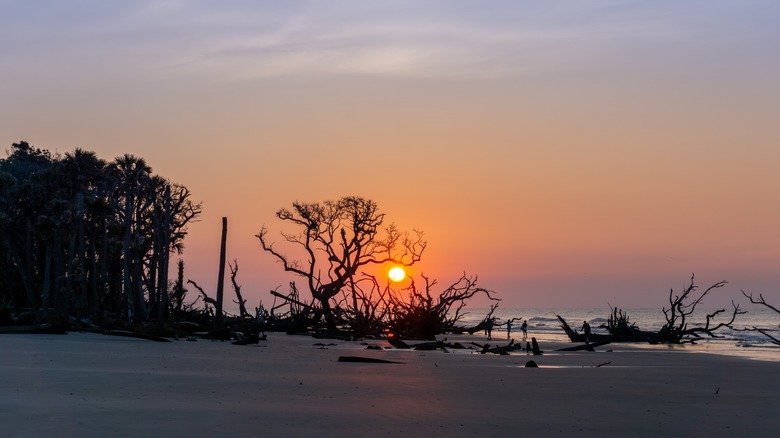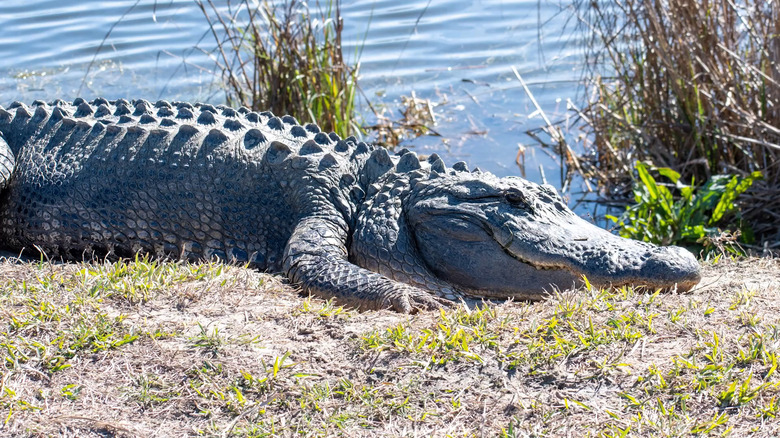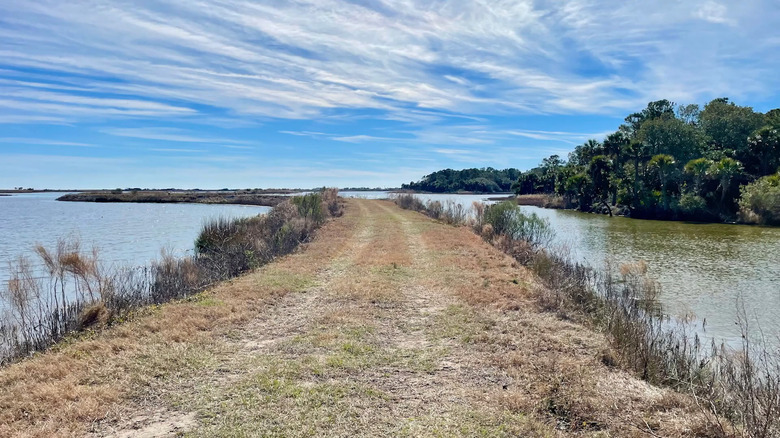Spot Tons Of Unique Wildlife And Escape Crowds At This Serene South Carolina Barrier Island
Within South Carolina's stunning Cape Romain National Wildlife, a diverse wilderness of islands, marshes, and forests, is Bulls Island. Located roughly 20 miles from Charleston, this fascinating place is only accessible by ferry and, as you look out over the water, you might just spot a pod of dolphins swimming around you. This once-in-a-lifetime experience might end up being your favorite experience spotting animals in their natural habitats, but it certainly won't be the last. Bulls Island and the surrounding waters are a safe haven for migrating birds, sunning alligators, egg-laying turtles, black bears, and many, many other species.
In 2010, the U.S. Department of the Interior Fish and Wildlife Service Southeast Region reported that there were only about 50,000 visitors to this lush maritime forest. While there may be more people coming to explore this natural wilderness today, there is no doubt that compared to South Carolina's most popular spots, like famously crowded Myrtle Beach or Hunting Island State Park – which has more than a million people arriving every year — it's a far more private experience in nature.
Bulls Island supports animals of all kinds
Florida's Everglades National Park may be the only place in the world to see wild alligators and crocodiles, but you can see alligators and plenty of other incredible wild creatures right here in South Carolina. This wilderness has been preserved in a natural state, allowing both its native and introduced creatures to thrive. In these coastal waters, you might spot whales, dolphins, and even manatees, and along the island's marshes and beaches you might see nesting sea turtles, but the most popular residents of the island are probably the birds. While there's plenty to do and see on Bulls Island for nature lovers of all kinds, those most likely to make the journey are birdwatchers, traveling to the island to see migrating birds like ibises and spoonbills stop here to wade through the shallow waters and hunt for food.
This habitat was even used to help restore the population of highly endangered wolves from the brink of extinction, when breeding pairs were released onto the island to breed, leading to the birth of 26 pups over the following decades. The wolves have since been relocated as part of conservation efforts, you'll have to go to the nearby Cape Romain National Wildlife Refuge's Sewee Visitor Center to see their red wolf exhibit, but the incredible habitat of Bulls Island was vital to the survival of the species.
See the best of the island's hiking trails
If you're interested in the coastal waters, there are kayak and ferry tours you can book in order to see the island from the outside, but if you want to spend a quiet afternoon exploring this beautiful secluded wilderness, you should check out the island's hiking trails. While this place is mostly undeveloped, there are trails going throughout the island which you can follow to see interesting spots like Boneyard Beach, where bare tree trunks and sand meet the water. To get there, all you have to do is step off the ferry and follow the Beach Road until you reach the opposite shore. If you're intending to make this a solo hike, make sure to review the safety tips before you hop on the ferry.
The best way to spot this park's wildlife is on its trails, too. For instance, if you're hoping to see the alligators that live on Bulls Island, Alligator Alley Trail will take you to some of their favorite spots in the preserve. Sheep's Head Bay Road will take you to one of the few man-made structures here: a 16-foot-tall observation tower that provides incredible views of the island. If you take the Turkey Walk Nature Trail, you should find yourself close to the Dave Clough Wildlife Viewing Platform, which is one of the best places in the park for birdwatching.


